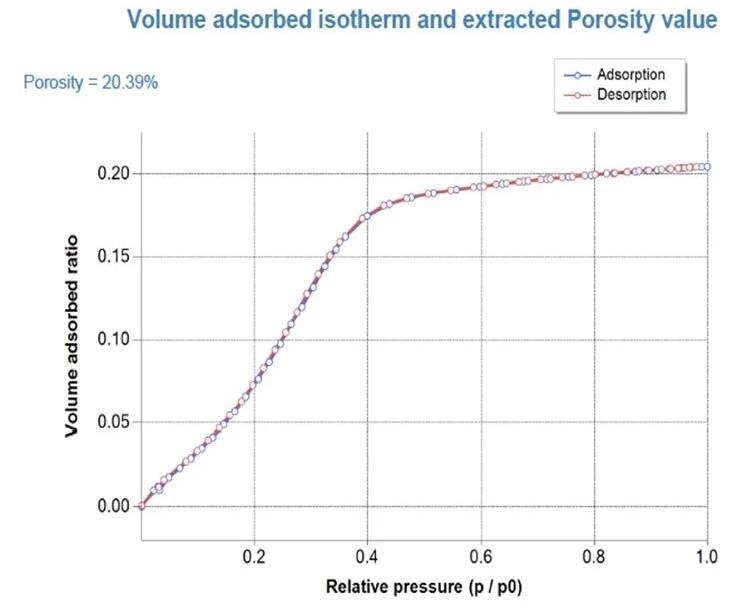Ellipsometry Porosimetry (EP) is used to measure the thickness of the materials and how its optical properties change throughout adsorption and desorption of a volatile species either under less pressure (EP) or at atmospheric pressure (EPA), depending on the application.
Due to its capacity to measure porosity of extremely thin films down to 10 nm, its speeds of measurement and its reproducibility, the EP technique is unique. When compared to a traditional Porosimeter, Ellipsometer porosimeters are well matched for pore size distribution and extremely thin film pore size measurement.

Image Credit: Semilab Semiconductor Physics Laboratory
Film porosity is vital in Silicon based technology using low k materials, organic industry (encapsulated OLED's) and in the coating industry using SolGel technics. Ellipsometry porosimetry (EP) technology was patented by IMEC and is licensed exclusively to Semilab.
Ellipsometric Porosimetry (EP) measures the alterations in optical properties and thickness of porous thin films by spectroscopic ellipsometry (SE) during an adsorption cycle of an organic solvent. These changes occur as the pores in the material are filled by the adsorptive.
Certain layer properties can be deduced from the measured refractive index and thickness behavior throughout the adsorption cycle:
- Pore size distribution and characteristic pore size
- Hydrophobicity (water penetration)
- Young’s Modulus
- Diffusion coefficient
- Porosity
Semilab suggests two types of adsorption cycle setup:
- At atmospheric pressure, (EPA) with water as solvent
- Under vacuum (EP) with many different organic adsorptives (Ethanol, Methanol, Toluene, Water, IPA, etc.).
The method is able to access both micro porosity (Pore diameter < 2 nm) and meso porosity (2 > Pore diameter > 50 nm).
It can be used on layers from 10 nm to several µm depending on the instrument configuration.
Unlike a traditional Porosimeter, EP does not require sample preparation or film scratching and is ideal for extremely thin film pore size and pore size distribution measurement.
Due to its ability to measure the porosity of both single and multilayered thin film structures with excellent measurement speed and reproducibility it is a unique method.

Image Credit: Semilab Semiconductor Physics Laboratory

Image Credit: Semilab Semiconductor Physics Laboratory
Applications
The EP technique has a number of advantages, as thin film porosity is a key factor in photovoltaic with metal oxides (SiO2, TiO2, W2O3 etc.) for dye-sensitized solar cells, silicon-based technology using low k materials or porous silicon films, organic electronic with the permeability of the barrier layer for OPV or OLED (encapsulation), and utilization in the coating industry via SolGel method.
Features
The EP method enables reliable and precise measurements of:
- Refractive index
- Diffusion coefficient
- Pore size distribution and Young modulus of porous thin films like nanoparticle layers, ultra low K, porous silicon, metal oxides or barrier layers integrity
- Sealing efficiency
- Thickness
- Porosity

This information has been sourced, reviewed and adapted from materials provided by Semilab Semiconductor Physics Laboratory.
For more information on this source, please visit Semilab Semiconductor Physics Laboratory.